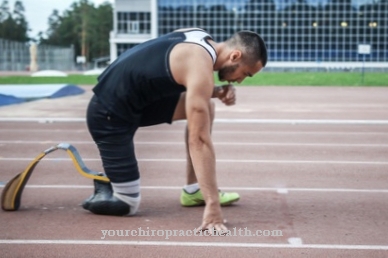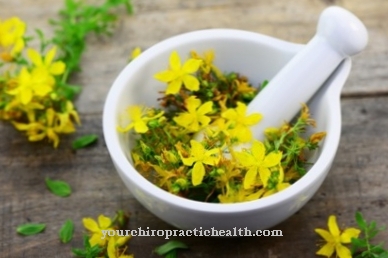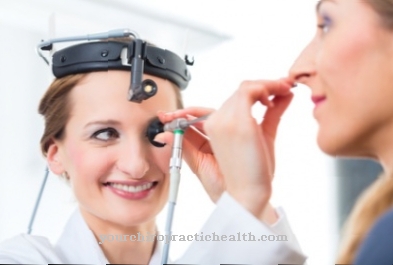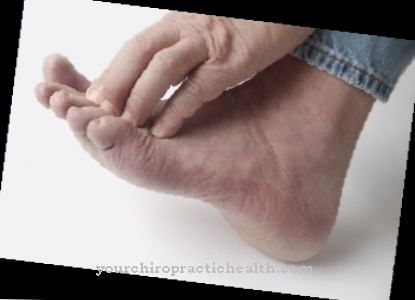Of course you brush and comb your hair every day, of course you brush your teeth regularly and pay close attention to the care of your skin. You would be right to be indignant if someone asked you how thoroughly your daily personal hygiene was done. But do you also think about your feet? Nice, you do a footbath often, if at all possible daily. But is that enough to do justice to these “most faithful hard workers” of our bodies? This guide is designed to help you learn more about do-it-yourself medical foot care.
Heavily stressed feet

80 out of 100 people suffer from foot problems and almost all of them were born with healthy feet. This should give a reason to think. A housewife covers a good 10 km in the course of the day, a salesman achieves a daily output of 30 to 25 km, and a schoolchild can easily manage around 35 km a day. However, these figures only give an incomplete picture of the performance that we demand of our feet every day, because carrying our body weight while standing is also a work that must first be performed by feet and legs.
Anyone who wants to keep their feet healthy, and especially those who complain of foot problems or who have already developed a flat, flat or splayfoot, should not take the service of the feet for granted. Anyone who thinks they can do without foot care, perhaps even mistreated and overexerted their feet for years in bad shoes, shouldn't be surprised if their feet are poor.
Maintain healthy feet
How can you maintain the performance of your feet and what can you do if your feet are already malformed to make work easier for your feet? There are a few rules for doing this that can be met without any effort or expenditure of time. Just think of them:
1. Don't always stand! The feet also want to rest, even if only for a few minutes. Frequent people should take advantage of every opportunity to sit down. For example, people who have to do a lot of household chores stand much more often than one would initially assume. Much of the housework can be done while sitting. However, you shouldn't just sit all day. Variety is important.
2. Don't always sit! Due to the angled position in the hip and knee and the lack of work in the leg muscles, the blood is not transported back to the heart quickly enough. Blood congestion, fat feet, a feeling of heaviness in the legs and varicose veins can result.
3. Wear comfortable, foot-friendly shoes! Don't go along with the fashion stupidities. Shoes that are too tight, too pointed and too small, which may still have a rigid sole, will soon make you suffer from foot problems. The heel should be as wide as possible and not higher than 3.5 cm, as otherwise the body weight is unnaturally shifted and the overused muscles tire too quickly. The old, well-worn, and therefore comfortable-looking shoe may not be worn to work, but the most suitable one is the right work shoe. Do not wear the same pair for weeks, otherwise as you get used to it, the muscles of the feet will become weak. Buy shoes that are cut as wide as possible for the summer. The foot can then be better ventilated.
4. Dance a lot! Not only are the muscles of the feet and legs trained, but you also get in a good mood. If you own a bike, put up your saddle and step with your toe. The sole and calf muscles are practiced imperceptibly.
5. Walk barefoot a lot! Don't just choose stone slabs, but walk in the sand, in the moss or across a meadow. Not only are all ligaments and muscles used in the most natural way, but blood circulation is also stimulated.
6. Put your legs up as often as possible! The blood that has built up during the day's work flows away through the elevation.Anyone who has to suffer from tired feet in the evening can support the drainage of the blood with a balancing foot massage from the tip of the foot to the heart.
7. Do regular foot gymnastics, jog or go hiking! The last point has it all, because it is not as easy to fulfill as the previous ones. It takes time and perseverance, at least 15 minutes a day.
Medical foot care with foot exercises

Here are a few exercises for foot gymnastics:
- Raise and lower toe, left and right ten times.
- Vigorously raise and lower the inner edge of the foot, ten times left and right. So that the muscles can relax again and again, take a break several times in between.
- Toe stand, toe walking, hopping and jumping on your toes, toe walking in a crouch. Keep your knees closed!
- A small ball is rolled back and forth under the entire sole of the foot. The first few times this exercise is not as easy as you might think, but be patient, you will soon have the right foot feeling.
- Lie on your back, knees and hips are bent at right angles, the soles of your feet hold a small ball. Now roll the ball back and forth between the soles. But don't lose it.
- Try picking a towel, wooden spoon, or matchbox off the floor with your toes.
Then hold the object with only your toes and extend your leg until the knee is pushed in. Well worth the effort. The ability of the toes to grip and spread is increased and the muscles more elastic. If you want to master it, pick up a pencil with your toes and draw a little house on a piece of paper. Of course, you have to show the painting to your acquaintances. They then have at least as much fun with it as you do with this exercise. Incidentally, this exercise is also suitable as a little party fun.
So every beginning is difficult. But once you have made the decision to also think about your feet in general body care, you will get through your everyday life without any foot problems. And also remember that nothing expresses a person's youthfulness and resilience more than a self-confident and happy step.













.jpg)

.jpg)
.jpg)











.jpg)